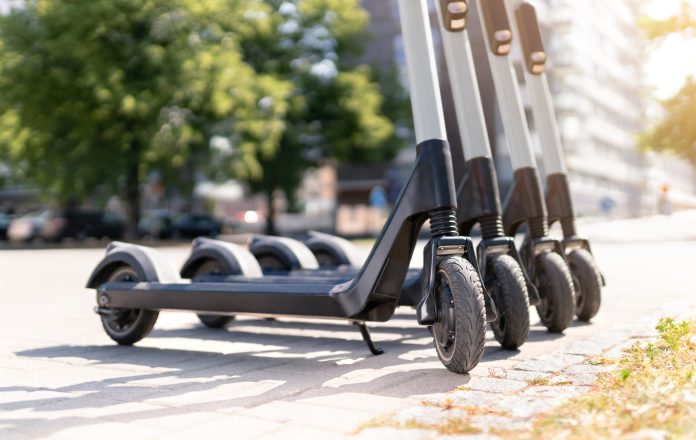Alex Froom, Chief Product Officer at Zipabout, examines the Department for Transport fast-track trials of rental e-scooters and how to integrate them into our existing transport network
Micro-mobility transport options, such as e-scooters and e-bikes, have the potential to transform the way we move around our towns and cities, providing sustainable first- and last-mile options.
In July 2020, the UK government legalised the use of rental e-scooters, one year earlier than planned, as part of its “green restart to local transport”. The Department for Transport (DfT) believes e-scooters offer the potential for fast, clean and inexpensive travel that can also help ease the burden on transport networks and allow for social distancing.
Local authorities
Councils are reacting positively to the announcement and trials of e-scooters have already begun in 14 UK cities and towns; expanding into new locations every month. The introduction of more active, sustainable transport alternatives will not only help local authorities reduce toxic air pollution but also alleviate congestion from private vehicles. For example, Swedish provider Voi, who has successfully rolled out e-scooter trials across the UK, predicts an average 12–16% car replacement rate in the areas it is active.
The initial buzz and excitement around e-scooters coming to the UK is a positive sign. However it’s imperative we learn from the experiences of our European counterparts. It’s no secret that a number of European cities have faced a huge problem with e-scooters being discarded on pavements and streets, inaccessible to those eager to use them as part of a multi-modal journey.
In order to avoid UK consumers seeing e-scooters and e-bike rentals as a novelty, only to eventually abandon them on pavements, micro-mobility providers need to balance the needs of the passenger and the needs of the transport network.
Real-time demand
For example, passengers must be able to access micro-mobility offerings properly as part of a seamless multi-modal journey. In order to do this, providers will need to see the real-time demand for micro-mobility solutions across different locations. This way, a rail passenger pulling into a station could receive personalised messaging about the nearest e-scooter, the best route to take, and how this compares to alternative modes of transport. This paves the way for unique, passenger-focused, first- and last-mile support.
With new legalisation on e-scooters and the introduction of trials, micro-mobility providers are quickly mobilising in order to secure the largest UK market share. However, those who successfully plug the gaps in existing transport systems will undoubtedly stand the test of time.
Data
Data insights are great at building a clear picture of passenger behaviour and e-mobility companies have this in abundance. However, this new data only presents half the picture and sheds little light on where an e-scooter fits as part of wider multi-modal journey. For example, TfL has launched a new project which aims to keep track of dockless rental bikes and e-bikes throughout London boroughs. However, by only providing ‘near real-time visibility’ the data will not sufficiently meet the needs of commuters looking incorporate e-mobility as part of a seamless journey.
In order to match capacity with demand and connect to new customers, cross collaboration between existing transport operators and other mobility services should be prioritised. It’s only by accessing existing regional behavioural and transport analytics, will e-scooter and e-bike providers be able to optimise their fleet numbers, positioning and forecast demand.
Crowd management
Successful case studies will be crucial in securing the future of e-mobility, as well as new contracts. Local authorities are under increasing pressure to develop their own strategies for dealing with the crisis of crowd management on transportation, and they will be looking for hard evidence on how micro-mobility products have helped spread the load and eased the burden on transport networks.
With the latest influx of e-scooter trials to the UK we are seeing some providers that are continuing to work in isolation. However, there are also those exciting companies that get how important integration is and are proactively engaging with us on how we can improve first- and last-mile support to create a greener, healthier future.











